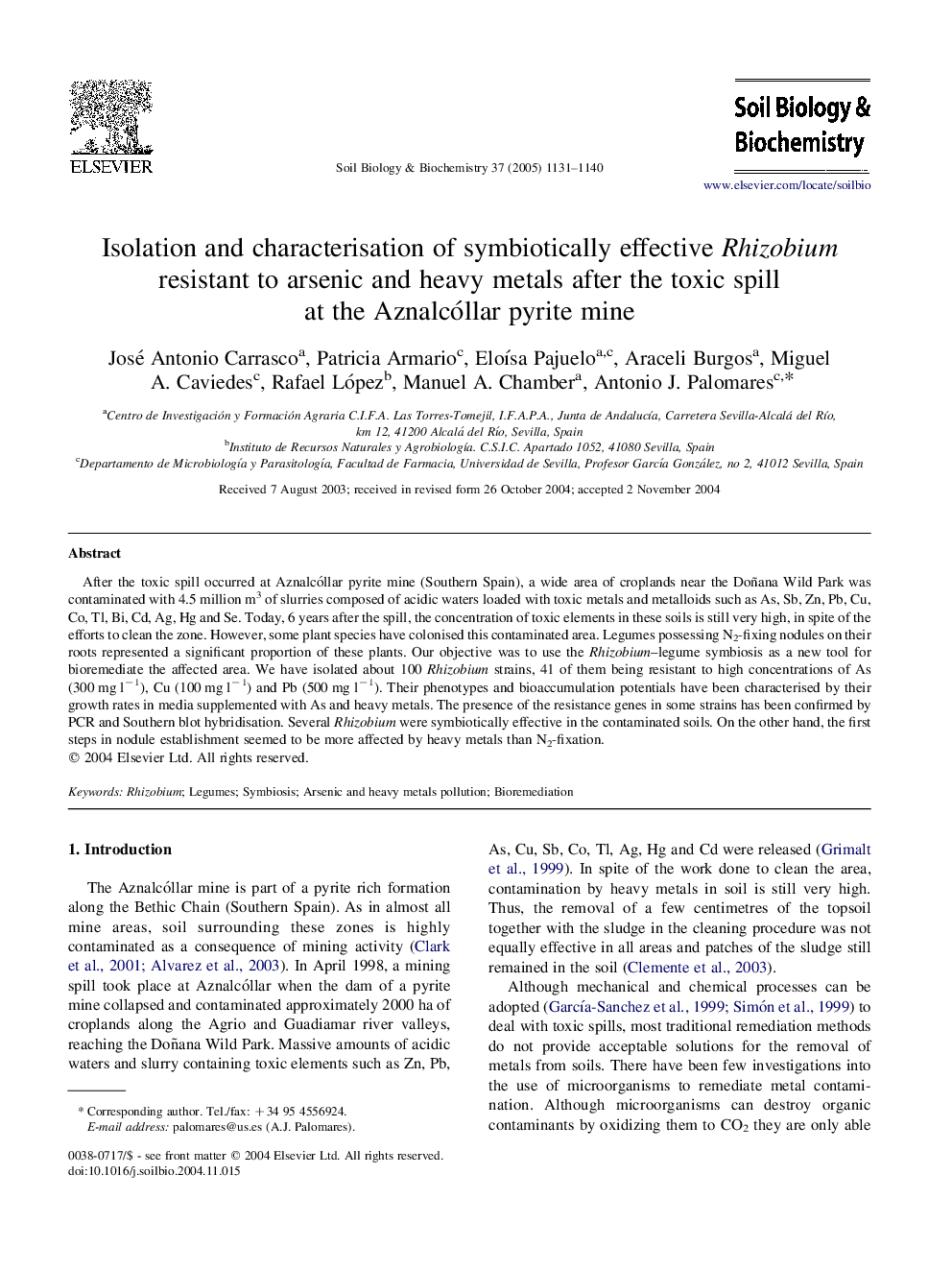| Article ID | Journal | Published Year | Pages | File Type |
|---|---|---|---|---|
| 10846359 | Soil Biology and Biochemistry | 2005 | 10 Pages |
Abstract
After the toxic spill occurred at Aznalcóllar pyrite mine (Southern Spain), a wide area of croplands near the Doñana Wild Park was contaminated with 4.5 million m3 of slurries composed of acidic waters loaded with toxic metals and metalloids such as As, Sb, Zn, Pb, Cu, Co, Tl, Bi, Cd, Ag, Hg and Se. Today, 6 years after the spill, the concentration of toxic elements in these soils is still very high, in spite of the efforts to clean the zone. However, some plant species have colonised this contaminated area. Legumes possessing N2-fixing nodules on their roots represented a significant proportion of these plants. Our objective was to use the Rhizobium-legume symbiosis as a new tool for bioremediate the affected area. We have isolated about 100 Rhizobium strains, 41 of them being resistant to high concentrations of As (300 mg lâ1), Cu (100 mg lâ1) and Pb (500 mg lâ1). Their phenotypes and bioaccumulation potentials have been characterised by their growth rates in media supplemented with As and heavy metals. The presence of the resistance genes in some strains has been confirmed by PCR and Southern blot hybridisation. Several Rhizobium were symbiotically effective in the contaminated soils. On the other hand, the first steps in nodule establishment seemed to be more affected by heavy metals than N2-fixation.
Related Topics
Life Sciences
Agricultural and Biological Sciences
Soil Science
Authors
José Antonio Carrasco, Patricia Armario, EloÃsa Pajuelo, Araceli Burgos, Miguel A. Caviedes, Rafael López, Manuel A. Chamber, Antonio J. Palomares,
